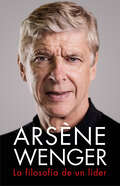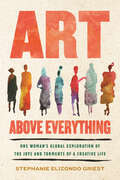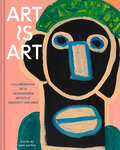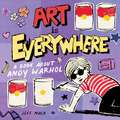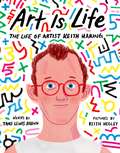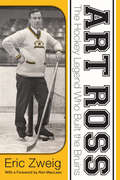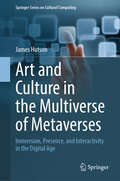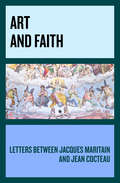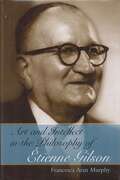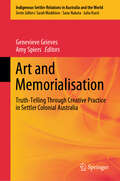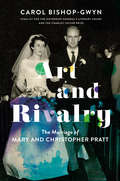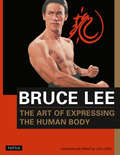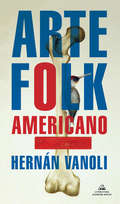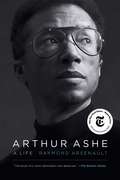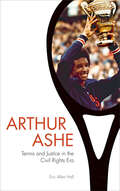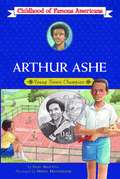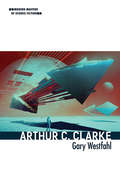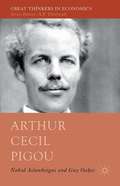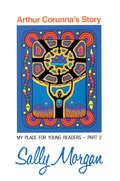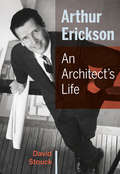- Table View
- List View
Arshile Gorky: His Life and Work
by Hayden HerreraFrom the Author of Frida, the Moving and Heroic Story of One of the Central Painters of the Twentieth CenturyBorn in Turkey around 1900, Vosdanik Adoian escaped the massacres of Armenians in 1915 only to watch his mother die of starvation and his family scatter in their flight from the Turks. Arriving in America in 1920, Adoian invented the pseudonym Arshile Gorky-and obliterated his past. Claiming to be a distant cousin of the novelist Maxim Gorky, he found work as an art teacher and undertook a program of rigorous study, schooling himself in the modern painters he most admired, especially Cézanne and Picasso. By the early forties, Gorky had entered his most fruitful period and developed the style that is seen as the link between European modernism and American abstract expressionism. His masterpieces influenced the great generation of American painters in the late forties, even as Gorky faced a series of personal catastrophes: a studio fire, cancer, and a car accident that temporarily paralyzed his painting arm. Further demoralized by the dissolution of his seven-year marriage, Gorky hanged himself in 1948.A sympathetic, sensitive account of artistic and personal triumph as well as tragedy, Hayden Herrera's biography is the first to interpret Gorky's work in depth. The result of more than three decades of scholarship-and a lifelong engagement with Gorky's paintings-Arshile Gorky traces the progress from apprentice to master of the man André Breton called "the most important painter in American history."
Arshile Gorky: The Implications of Symbols
by Harry RandThis title is part of UC Press's Voices Revived program, which commemorates University of California Press’s mission to seek out and cultivate the brightest minds and give them voice, reach, and impact. Drawing on a backlist dating to 1893, Voices Revived makes high-quality, peer-reviewed scholarship accessible once again using print-on-demand technology. This title was originally published in 1991.This title is part of UC Press's Voices Revived program, which commemorates University of California Press’s mission to seek out and cultivate the brightest minds and give them voice, reach, and impact. Drawing on a backlist dating to 1893, Voices Revived</DIV
Arsène Wenger. La filosofía de un lider
by Arsène WengerSOLO EXISTE UN ARSÈNE WENGER. ESTA ES SU HISTORIA. LA APASIONANTE AUTOBIOGRAFÍA DE UN ÍCONO MUNDIAL DEL FÚTBOL. UN LIBRO REPLETO DE HERRAMIENTAS PARA EL DESARROLLO PROFESIONAL, POR UN EXPERTO EN LA GESTIÓN DE EQUIPOS.Premio Telegraph al mejor libro deportivo de 2021. «Quiero compartir lo que sé, lo que aprendí del juego y del deporte en general, y hacerlo no solo con los que aman el fútbol, sino también con aquellos a los que este maravilloso deporte no les es familiar, pero que también se preguntan cómo triunfar en la vida, cómo guiar y liderar un equipo hacia la victoria y de las lecciones que se aprenden de la derrota.»Tras 21 años en el Arsenal, 1235 partidos dirigidos como entrenador, con un record del 57% de partidos ganados, creador de «Los Invencibles», por sus manos pasaron innumerables estrellas del fútbol mundial, respetado por sus rivales, y generando un profundo impacto en el fútbol inglés, las memorias de Arsène Wenger será seguramente, el libro de literatura deportiva del 2020.Este es un libro de lectura obligada no solo para los seguidores del Arsenal, sino para todos aquellos que aman el fútbol en todo el mundo y también para todos los interesados en coaching y liderazgo en búsqueda de nuevas herramientas para conseguir el éxito profesional y personal. Un enfoque que nos ayudará a entender el misticismo alrededor de uno de los entrenadores y gestores de grupo más respetados en la historia del deporte. La crítica ha dicho...«La biografía de Arsène Wenger es un manual de gestión deportiva fundamental para entender el fútbol moderno.»Líbero «El entrenador galo aborda las claves de su periplo profesional.»Marca «Un manual sobre fútbol, pero tiene también cierto aire de guía para la gestión del liderazgo.»Pedro Zuazua, El País«Son los episodios en los que muestra su cara más íntima los más disfrutables del recorrido. El técnico recuerda su vida en orden cronológico: del niño que soñaba con el fútbol a su vida después del Arsenal. Del "¿Arséne who?" al Sir Arséne Wenger.»Dídac Peyret, Sport
Art Above Everything: One Woman's Global Exploration of the Joys and Torments of a Creative Life
by Stephanie Elizondo GriestMeet queer, BIPOC, and women artists around the world as they discuss the gifts, costs, and redemptive power of pursuing a creative lifeIs the all-encompassing quest to become a self-sustaining artist worth the sacrifices it often requires? Throughout her 20s and 30s, Stephanie Elizondo Griest could not help worrying if constantly prioritizing her writing over everything else—from postponing children to living nomadically to save on rent—was leading her to fulfillment or regret. After a break-up and serious health crisis in her early 40s, she decided to turn to other women artists for their perspectives on that perennial question: is art enough?Art Above Everything introduces us to legendary writers, visual artists, dancers, and musicians across the globe, who talk intimately about their art, what it requires, what it gifts them, and what it costs them. Opening in a classical Indian dance village, Elizondo Griest goes on to meet 100+ artists in Rwanda, Romania, Qatar, Iceland, Mexico, New Zealand, Cuba, and the United States. She discovers artists from Rwandan playwright Hope Azeda, who navigated ethnic tensions as she attempted to bring about reconciliation through theater in the aftermath of genocide; to Romanian painter Florica Prevenda, who got assigned to a provincial factory during Ceaușescu&’s dictatorship but never relinquished her brushes.Art is inheritance, dissent, devotion, revenge, celebration, and more. Yet though each artist&’s relationship to their craft is different, their need to create in the face of economic hardship, misogyny, sexual violence, and family ostracization is wholly akin.Bold and inspiring, Art Above Everything never pretends that the artist&’s path is easy—but it illuminates the infinite ways we can wield creativity as a vitalizing force.
Art Is Art: 40 Years of Collaborating with Neurodiverse Artists at Creativity Explored
by Ann KappesCreativity Explored celebrates its 40th anniversary with a collection of powerful artwork and perspectives from its talented studio artists.This vibrant book uplifts the voices of the artists of Creativity Explored, a nonprofit that gives people with developmental disabilities the opportunity to express themselves through art and share their work with audiences from their local community and in the contemporary art world.This curated collection features more than one hundred original paintings, drawings, illustrations, and sculptures—as well as quotes and stories from the artists—inviting readers to examine and challenge their perceptions about disability. Some artworks are humorous and blunt, while others are affecting and abstract, speaking to the artistic community's diversity and creativity. This book offers an engaging introduction to person-centered thinking for art lovers or anyone interested in learning about disability justice in a visual way.DEMYSTIFYING DISABILITY: This significant new anthology showcases an array of developmentally disabled artists and organizes their works into thematic chapters, such as "Self Medication," "On the Spectrum," "Yes I Do Think About Sex," and "Our Fears." These chapters provide interesting stylistic juxtapositions and personal reflections that highlight both individual and shared experiences as diverse disabled artists. BEAUTIFUL AND CONTENT RICH: This gorgeous hardcover art book features more than one hundred original artworks in full color, from lively portraits and detailed drawings to abstract paintings and captivating illustrations. Quotes, interviews, personal stories, and artist statements also give readers deeper insight into the artists' creative practices, processes, and rituals. This book is a rich visual trove and source of inspiration for any contemporary art lover. SUPPORT A GREAT CAUSE: Creativity Explored was founded in 1983 with the belief that art is essential to life. This book celebrates the organization's mission and its talented artists after forty years of creating impactful arts and career programs with developmentally disabled artists. This collection is a meaningful way to learn more about Creativity Explored and the diverse community it continues to support today.Perfect for:Art lovers and activistsPeople who admire the mission and work of Creativity ExploredThe disabled community, allies, and educatorsGift seekers for family and friends interested in learning more about disability justiceFans of self-taught artists, folk arts, and "outsider art"Contemporary art anthology and art book collectors#OwnVoices readers and anyone interested in diversifying their contemporary art knowledge
Art Is Everywhere: A Book About Andy Warhol
by Jeff MackThis is the story of Andy Warhol—and how his pop art took the world by storm. From drawing shoes for a shoe company to his Campbell's Soup cans and Marilyn Monroe prints, Andy made art out of the everyday. People claimed Andy's art wasn't real art, but that didn't stop him from making it, plus movies, a magazine, a TV show, and more!With Art Is Everywhere, Jeff Mack explores Warhol's fascination (and our own) with celebrity and fame, and opens readers' minds to the possibilities for art in the world around us.
Art Is Life: The Life of Artist Keith Haring
by Tami Lewis BrownWriter Tami Lewis Brown and illustrator Keith Negley present a joyful picture book biography of modern art icon Keith Haring, celebrating the ways his life embodied the message: art is for everyone.Art is life...and life is art.Keith Haring believed that art should be enjoyed by everyone.When Keith first moved to New York City, he rode the subway and noticed how the crowds were bored and brusque, and that the subways were decayed and dreary. He thought the people of New York needed liberating, illuminating, and radiating art. So he bought a stick of white chalk and started drawing…
Art Ross: The Hockey Legend Who Built the Bruins
by Eric Zweig Ron MacleanThe first authorized biography of Art Ross, Hockey Hall of Famer, NHL founding father, and long-time member of the Boston Bruins. Though he last played the game nearly one hundred years ago, Art Ross remains connected with the greatest stars in hockey. Gordie Howe, Bobby Orr, Wayne Gretzky, and Sidney Crosby have all won the award that bears his name, the trophy given annually to the NHL’s top scorer. Ross himself managed just one goal during his NHL career; however, in the dozen years leading up to the formation of the NHL in 1917, he was one of the biggest stars in the game. After his playing career ended, Ross became one of the founding fathers of the Boston Bruins, holding the positions of coach, general manager, and vice president. He was one of the men most responsible for making the NHL a success in the United States, and was integral to the modernization of hockey. All these accomplishments led to him being one of the first players inducted into the Hockey Hall of Fame. Hockey historian Eric Zweig brings to life the early days of hockey. From the mining towns of Northern Ontario to the hallowed halls of Boston Garden, Art Ross was one of the biggest names in hockey over his six decades in the game.
Art and Culture in the Multiverse of Metaverses: Immersion, Presence, and Interactivity in the Digital Age (Springer Series on Cultural Computing)
by James HutsonDrawing on the art historical framing of Location, Place, and Identity, this book will examine how the factors of Immersion, Presence, and Interactivity of XR are shaping our understanding of the world and our place within it. Location refers to the specific geographical or spatial context in which a work of art is created or experienced. Place refers to the social, cultural, and historical context of that location. Identity refers to the ways in which individuals and communities construct and express their sense of self and belonging within those contexts. Through case studies and theoretical analysis, Art and Culture in the Multiverse of Metaverses - Immersion, Presence, and Interactivity in the Digital Age, will explore how the factors of Immersion, Presence, and Interactivity of XR can be aligned with these art historical concepts, providing new opportunities for understanding and engaging with Location, Place, and Identity. For example, XR can be used to create immersive experiences of historical locations and cultural sites, allowing users to explore and engage with them in ways that would otherwise be impossible. Additionally, XR can be used to create interactive artworks that engage with issues of identity and belonging, creating new possibilities for self-expression and exploration.
Art and Faith: Letters between Jacques Maritain and Jean Cocteau
by Jean Cocteau Jacques MaritainThe meaning of poetry and the sociological and political significance of art are dealt with in these letters.
Art and Faith: Letters between Jacques Maritain and Jean Cocteau
by Jean Cocteau Jacques MaritainThe meaning of poetry and the sociological and political significance of art are dealt with in these letters.
Art and Intellect in the Philosophy of Étienne Gilson (The Eric Voegelin Institute Series in Political Philosophy #Volume One)
by Francesca Aran MurphyIn Art and Intellect in the Philosophy of Étienne Gilson, Francesca Aran Murphy tells the story of this French philosopher’s struggle to reconcile faith and reason. In his lifetime, Gilson often stood alone in presenting Saint Thomas Aquinas as a theologian, one whose philosophy came from his faith. Today, Gilson’s view is becoming the prevalent one. Murphy provides us with an intellectual biography of this Thomist leader throughout the stages of his scholarly development. <p><p>Murphy covers more than a half century of Gilson’s life while reminding readers of the political and social realities that confronted intellectuals of the early twentieth century. She shows the effects inner-church politics had on Gilson and his contemporaries such as Alfred Loisy, Lucien Lévy Bruhl, Charles Maurras, Henri de Lubac, Marie-Dominique Chenu, and Jacques Maritain, while also contextualizing Gilson’s own life and thoughts in relation to these philosophers and theologians. <p><p>These great thinkers, along with Gilson, continue to be sources of important intellectual debate among scholars, as do the political periods through which Gilson’s story threads—World Wars I and II, the rise and fall of Fascism, and the political upheavals of Europe. By placing Gilson’s twentieth-century Catholic life against a dramatic background of opposed political allegiances, clashing spiritualities, and warring ideas of philosophy, this book shows how rival factions each used their own interpretations of Thomas Aquinas to legitimate their conceptions of the Catholic Church. <p><p>In Art and Intellect in the Philosophy of Étienne Gilson, Murphy shows Gilson’s early openness to the artistic revolution of the Cubist and the Expressionist movements and how his love of art inspired his existential theology. She demonstrates the influence that Henri Bergson continued to have on Gilson and how Gilson tried to bring together the intellectual, Dominican side of Christianity with the charismatic, experiential Franciscan side. <p><p>Murphy concludes with a chapter on issues inspired by the Gilsonist tradition as developed by recent thinkers. This volume makes an original contribution to the study of Gilson, for the first time providing an organic and synthetic treatment of this major spiritual philosopher of modern times.
Art and Memorialisation: Truth-Telling Through Creative Practice in Settler Colonial Australia (Indigenous-Settler Relations in Australia and the World #6)
by Amy Spiers Genevieve GrievesThis edited volume reflects on the profound effort undertaken by artists to contest settler denial and amnesia to disclose Australia's foundations in racialised violence and land theft. The book examines how First Nations creative and cultural practitioners have turned to the unique spaces of art and culture to remember and mourn the profound loss of life caused by British invasion and colonisation in the absence of official commemoration and public acknowledgement of the damage caused. It significantly focuses on a number of creative practitioners driving this powerful memory-work, containing contributions from some of the leading thinkers on truth-telling through creative practice, including Fiona Foley, Dianne Jones, Vicki Couzens, Julie Gough, r e a, Tony Birch, Paola Balla, Neika Lehman, Arlie Alizzi, Charmaine Papertalk Green, Kate Golding, Odette Kelada and Clare Land. An important contribution to scholarship on the public memorialisation of difficult histories, this significant edited collection foregrounds First Nations, female, queer, trans and gender diverse artists and scholars from the continent that is known as 'Australia'. Taken together these deeply researched, considered texts, poems and conversations lend vital, critical perspectives on the ways artists are confronting settler colonial Australia’s toxic colonial memorial culture of denial. This book recognises that through a range of creative means and mediums, artists and cultural practitioners are making essential contributions to truth-telling, devising evocative, sensitive ways to make the injustices committed against First Peoples not only visible and tangible, but also strongly felt and grieved.
Art and Rivalry: The Marriage of Mary and Christopher Pratt
by Carol Bishop-GwynThe unauthorized biography of Canada's most famous artist couple and the rivalry that drove them.She painted as if with pure light, radiant colours making quotidian kitchen scenes come alive with sublimated drama. He painted like clockwork, each stroke precise and measured with exquisite care, leaving no angle unchecked and no subtlety of tone unattended. Some would say Mary Pratt was fire and Christopher, ice. And yet Newfoundland's Frida Kahlo and Diego Rivera (or Jackson Pollack and Lee Krasner...) presented their marriage as a portrait of harmony and balance. But balance off the canvas rarely makes great art, and the Pratts' art was spectacular. As a youth at Mount Allison University in New Brunswick, Mary pursued her future husband, a prodigious art talent, and supported his determination to study painting instead of medicine. They married and removed themselves to a Newfoundland outport where his painting alone provided the means to raise a family. But as Mary's own talents became evident and she sought her own hours at the easel, when not raising their four children, and as rumours of Christopher's affair with a young model spread, the Pratts' harmonious exterior slowly cracked, to scandal in Newfoundland and fascination across the country. A marriage ended, and gave way to a furious competition for dominance in Canadian art.
Art of Expressing the Human Body
by Bruce LeeThe Art of Expressing the Human Body, a title coined by Bruce Lee himself to describe his approach to martial arts, documents the techniques he used so effectively to perfect his body for superior health and muscularity. Beyond his martial arts and acting abilities, Lee's physical appearance and strength were truly astounding. He achieved this through an intensive and ever-evolving conditioning regime that is being revealed for the first time in this book. Drawing on Lee's own notes, letters, diaries and training logs, Bruce Lee historian John Little presents the full extent of Lee's unique training methods including nutrition, aerobics, isometrics, stretching and weight training. In addition to serving as a record of Bruce Lee's own training,The Art of Expressing the Human Body, with its easy-to-understand and simple-to-follow training routines, is a valuable source book for those who seek dramatic improvement in their health, conditioning, physical fitness, and appearance.
Art, Education, and African-American Culture: Albert Barnes and the Science of Philanthropy
by Mary Ann MeyersA physician who applied his knowledge of chemistry to the manufacture of a widely used antiseptic, Albert Barnes is best remembered as one of the great American art collectors. The Barnes Foundation, which houses his treasures, is a fabled repository of Impressionist, post-Impressionist, and early modern paintings. Less well known is the fact that Barnes attributed his passion for collecting art to his youthful experience of African-American culture, especially music. Art, Education, and African-American Culture is both a biography of an iconoclastic and innovative figure and a study of the often-conflicted efforts of an emergent liberalism to seek out and showcase African American contributions to the American aesthetic tradition.Mary Ann Meyers examines Barnes's background and career and the development and evolution of his enthusiasm for collecting pictures and sculpture. She shows how Barnes's commitment to breaking down invidious distinctions and his use of the uniquely arranged works in his collection as textbooks for his school, created a milieu where masterpieces of European and American late-nineteenth and early-twentieth century painting, along with rare and beautiful African art objects, became a backdrop for endless feuding. A gallery requiring renovation, a trust prohibiting the loan or sale of a single picture, and the efforts of Lincoln University, known as the "black Princeton," to balance conflicting needs and obligations all conspired to create a legacy of legal entanglement and disputes that remain in contention.This volume is neither an idealized account of a quixotic do-gooder nor is it a critique of a crank. While fully documenting Barnes's notorious eccentricities along with the clashing interests of the main personalities associated with his Foundation, Meyers eschews moral posturing in favor of a rich mosaic of peoples and institutions that illustrate many of the larger themes of American culture in general and African-American culture in particular.
Arte Folk Americano
by Hernán VanoliExtranjero en un país y un amor, la taxidermia es a la vez artesanía y metáfora de cómo aprender a sobrevivir a las pérdidas. «Una lengua totalmente transparente, directa, visual, que no se detiene nunca, en una especie de crónica de un presente puro.»Josefina Ludmer Con el objetivo de confeccionar monumentos a la memoria animal, el protagonista se inscribe en un curso de taxidermia donde al aprendizaje se corresponde con una profunda inmersión en el alma de cazadores, amantes de las armas y veteranos. Solos y dañados, sus compañeros son la contracara de los vínculos de su mujer en un campus de Iowa City. Siguiendo el duro invierno, los amantes pasan del entusiasmo inicial que anima la aventura migrante a un frío desencanto. Arte Folk Americano es una novela de transformación, un dispositivo literario fenomenal que eviscera y recompone las piezas de ese cuerpo único que a veces llamamos pareja, a veces familia, a veces país. Con las herramientas del embalsamador, el narrador, el cronista y el crítico, Hernán Vanoli despieza y monta ideas sobre la vida, la muerte y la naturaleza con la lírica de una balada romántica y dolorida que nos acompaña en un viaje por las rutas menos transitadas de los Estados Unidos.
Arthur Ashe: A Life
by Raymond ArsenaultThe first comprehensive, authoritative biography of American icon Arthur Ashe—the Jackie Robinson of men’s tennis—a pioneering athlete who, after breaking the color barrier, went on to become an influential civil rights activist and public intellectual. <p><p> Born in Richmond, Virginia, in 1943, by the age of eleven, Arthur Ashe was one of the state's most talented black tennis players. Jim Crow restrictions barred Ashe from competing with whites. Still, in 1960 he won the National Junior Indoor singles title, which led to a tennis scholarship at UCLA. He became the first African American to play for the US Davis Cup team in 1963, and two years later he won the NCAA singles championship. In 1968, he won both the US Amateur title and the first US Open title, rising to a number one national ranking. Turning professional in 1969, he soon became one of the world’s most successful tennis stars, winning the Australian Open in 1970 and Wimbledon in 1975. After retiring in 1980, he served four years as the US Davis Cup captain and was inducted into the International Tennis Hall of Fame in 1985. <p> In this revelatory biography, Raymond Arsenault chronicles Ashe’s rise to stardom on the court. But much of the book explores his off-court career as a human rights activist, philanthropist, broadcaster, writer, businessman, and celebrity. In the 1970s and 1980s, Ashe gained renown as an advocate for sportsmanship, education, racial equality, and the elimination of apartheid in South Africa. But from 1979 on, he was forced to deal with a serious heart condition that led to multiple surgeries and blood transfusions, one of which left him HIV-positive. <p> In 1988, after completing a three-volume history of African-American athletes, he was diagnosed with AIDS, a condition he revealed only four years later. After devoting the last ten months of his life to AIDS activism, he died in February 1993 at the age of forty-nine, leaving an inspiring legacy of dignity, integrity, and active citizenship. <p> Based on prodigious research, including more than one hundred interviews, Raymond Arsenault’s insightful and compelling biography puts Ashe in the context of both his time and the long struggle of African-American athletes seeking equal opportunity and respect.
Arthur Ashe: Portrait in Motion
by Arthur AsheAshe's diary of the 1973-74 tennis season, one of his most successful as a player.
Arthur Ashe: Tennis and Justice in the Civil Rights Era
by Eric Allen HallThe first scholarly biography of one of the most famous athletes of our time shows how Ashe worked for civil rights while playing a country-club sport in a white man’s world.Winner of the CHOICE Outstanding Academic Title of the Choice ACRLArthur Ashe explains how this iconic African American tennis player overcame racial and class barriers to reach the top of the tennis world in the 1960s and 1970s. But more important, it follows Ashe’s evolution as an activist who had to contend with the shift from civil rights to Black Power. Off the court, and in the arena of international politics, Ashe positioned himself at the center of the black freedom movement, negotiating the poles of black nationalism and assimilation into white society. Fiercely independent and protective of his public image, he navigated the thin line between conservatives and liberals, reactionaries and radicals, the sports establishment and the black cause.Eric Allen Hall’s work examines Ashe’s life as a struggle against adversity but also a negotiation between the comforts—perhaps requirements—of tennis-star status and the felt obligation to protest the discriminatory barriers the white world constructed to keep black people "in their place."Drawing on coverage of Ashe’s athletic career and social activism in domestic and international publications, archives including the Ashe Papers, and a variety of published memoirs and interviews, Hall has created an intimate, nuanced portrait of a great athlete who stood at the crossroads of sports and equal justice.
Arthur Ashe: Young Tennis Champion (Childhood of Famous Americans Series)
by Paul Mantell Meryl HendersonChildhood of Famous Americans One of the most popular series ever published for young Americans, these classics have been praised alike by parents, teachers, and librarians. With these lively, inspiring, fictionalized biographies -- easily read by children of eight and up -- today's youngster is swept right into history.
Arthur C. Clarke (Modern Masters of Science Fiction #36)
by Gary WestfahlAlready renowned for his science fiction and scientific nonfiction, Arthur C. Clarke became the world's most famous science fiction writer after the success of 2001: A Space Odyssey. He then produced novels like Rendezvous with Rama and The Fountains of Paradise that many regard as his finest works. Gary Westfahl closely examines Clarke's remarkable career, ranging from his forgotten juvenilia to the passages he completed for a final novel, The Last Theorem. As Westfahl explains, Clarke's science fiction offered original perspectives on subjects like new inventions, space travel, humanity's destiny, alien encounters, the undersea world, and religion. While not inclined to mysticism, Clarke necessarily employed mystical language to describe the fantastic achievements of advanced aliens and future humans. Westfahl also contradicts the common perception that Clarke's characters were bland and underdeveloped, arguing that these reticent, solitary individuals, who avoid conventional relationships, represent his most significant prediction of the future, as they embody the increasingly common lifestyle of people in the twenty-first century.
Arthur Cecil Pigou (Great Thinkers In Economics Ser.)
by Nahid Aslanbeigui Guy OakesThe British economist Arthur Cecil Pigou (1877-59) reconceptualized economics as a theory of economic welfare and a logic of policy analysis. Misconceptions of his work abound. This book, an essay in demystification and the first reading of the entire Pigouvian oeuvre, stresses his pragmatic and historicist premises.
Arthur Corunna's Story
by Fremantle PressSally Morgan’s My Place is an Australian classic. Since first publication in 1987, My Place has sold more than half a million copies in Australia, been translated and read all over the world, and been reprinted dozens of times. Sally’s rich, zesty and moving work is perhaps the best-loved biography of Aboriginal Australia ever written. My Place for Young Readers is an abridged edition, especially adapted for younger readers, that retains all the charm and power of the original. Arthur Corunna’s Story is about Sally’s grandfather.
Arthur Erickson
by David StouckArthur Erickson, Canada's pre-eminent philosopher architect, was renowned internationally for his innovative approach to landscape, his genius for spatial composition, and his epic vision of architecture for people. Among his most celebrated large-scale works are three that helped to define Vancouver's urban landscape: Simon Fraser University, on Burnaby Mountain; the Robson Square complex at the heart of the city; and the exquisite Museum of Anthropology at the University of British Columbia. Travel was key to Erickson's creative process; floating high above the clouds on extended airline flights, he made preliminary drawings on vellum with his fine-point black felt-tip pen, designing influential works not only for other parts of Canada-including Toronto's widely admired Roy Thomson Hall--but for sites in the U.S., Britain, and the Middle and Far East. Erickson worked chiefly in concrete, which he called "the marble of our times," and wherever they appear, his buildings move the spirit with their poetic freshness and their mission to inspire. But he was also a controversial figure, more than once attracting the ire of his fellow architects, and his professional achievements were tarnished by the excesses of a complicated personal life that resulted in a series of tawdry bankruptcies. In a fall from grace that recalls a Greek tragedy, Canada's great architect-a handsome, elegant man who lived like a millionaire and counted among his close friends Pierre Trudeau and Elizabeth Taylor-eventually became homeless and penniless.This first full biography of Erickson, who died in 2009 at the age of eighty-four, traces the architect's life from its modest origins to his emergence on the world stage. Author David Stouck, acclaimed for his earlier biographies of Ethel Wilson and Sinclair Ross, demonstrates here once again why his work has been praised as imaginative, incisive and compelling. Grounded in interviews with Erickson and his family, friends and clients, as well as the resources of extensive public archives, TITLE is both an intimate portrait of the man and a stirring account of how Erickson made his buildings work. Beautifully written and superbly researched, it is also a provocative look at the phenomenon of cultural heroes and the nature of what we call "genius."


